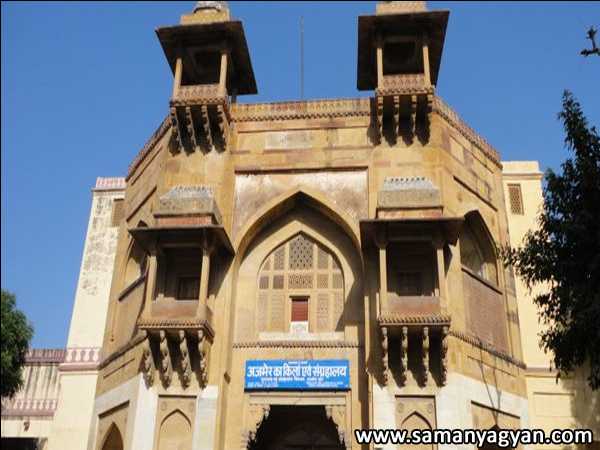Akbar Fort And Museum Quick Facts
| Place | Ajmer, Rajasthan (India) |
| Built in | 16th century |
| Built by | Mughal emperor Akbar |
| Type | Fort |
Akbar Fort And Museum Overview
India is the 7th largest country in the world. India is famous all over the world due to its different types of culture and architecture. India was very prosperous in ancient times, hence it was also called golden bird. Many rulers ruled here in ancient Indian history and built many buildings during their reign.
The Mughal emperor Akbar built one such fort in Ajmer, which is called Akbar's Fort, which is also a 'State Museum' in the present day. This fort is one of the strong forts of Rajasthan. Some time ago, the Akbar's Fort located in Ajmer has been renamed as Ajmer Fort and Museum by the Rajasthan Government, which is famous all over the world for its amazing architectural style.
Akbar Fort And Museum History
Located in Ajmer in the Indian state of Rajasthan, this historical Fort was built by the Mughal emperor Akbar in the 16th century. The Mughal emperor Jahangir conducted military campaigns from this fort from 1613 to 1616 during his reign. The fort was used as the meeting place of the Mughal emperor Jahangir and the British ambassador to the Mughal court, Sir Thomas Roe. This palace was used to stay for the emperor and his soldiers when they were in Ajmer.
Akbar Fort And Museum Interesting Facts
- Despite Agra being the capital of Akbar, he also built a fort for his stay in Ajmer's new market in 1570 AD, which is known as Akbar's fort.
- This historical fort has four big bastions and many huge gates.
- There is a beautiful door on the west side of the fort and the main building is built right in the middle of the fort complex. The gate of the fort is 84 feet high and 43 feet wide.
- It is said that the Mughal emperor Akbar used to come here every year to visit Khwaja Sahib and participate in the wars of Rajputana.
- Located in Rajasthan, this fort is also known as “Akbar Ka Daulatkhana”, “Magazine Fort” and “Ajmer Fort”.
- This fort was built by Akbar in the Hindu-Muslim system.
- In the year 1576, the plan of the Haldighati war against Maharana Pratap was finalized inside this fort.
- On 18 November 1613, when Mughal Emperor Jahangir came to Ajmer to bring Mewar under his control after defeating Maharana Amar Singh of Udaipur, he stayed in this fort for three years.
- The main gate of the fort is also called "Jahangiri Darwaza", because Emperor Jahangir used to sit daily in the window located on this door and give darshan to the public and do justice.
- Sir Thomas Roe, the ambassador of the British Emperor James I, met the Mughal emperor Jahangir on January 10, 1616 and obtained permission to trade in India for the East India Company. After this, the British started capturing different parts of India, so it can be said that the story of slavery of the country started from the Akbar Fort itself.
- This fort was captured by the British in the year 1818. They used this fort as Rajputana armory and they called it by the name of 'Magazine', hence since then it is also called Magazine Fort.
- At the time of India's independence, on 15 August 1947, Ajmer Congress President Jitmal Luniya hoisted the national flag on this fort, declared the end of the British rule and the independence of Ajmer.
- In 1902 AD, Lord Curzon, during his visit to Ajmer, advised Sir John Marshall, the then Director General of the Archaeological Survey of India, to collect ancient Rajput monuments and artistic antiquities scattered at various places. After which the kings of some states had contributed in collecting the antiquities.
- The 'Delhi-Rajputana Museum' was established by the Government of India on 19 October 1908 at Daulatkhana (Magazine or Akbar's Fort) in Ajmer. Colvin, the then AGG of Rajputana, inaugurated this museum. Eminent historian Gaurishankar Hirachand Ojha was made the first curator of this museum.
- In this museum, architectural specimens of the 6th and 7th centuries, many Hindu sculptures, coins, paintings, weapons, huge material obtained from Saraswati Kanthabharan temple (two and a half day hut), plays posts, inscriptions etc. are kept. Most of the sculptures in the museum depict a mixture of Rajput and Mughal styles. This museum is one of the rich museums of India.
- In this Fort, very grand painting and mosaic work on the walls of the male chambers has been done in a very artistic manner.
- A large black marble statue of Mata Kali is also present inside the fort, which is the most famous attraction here.

